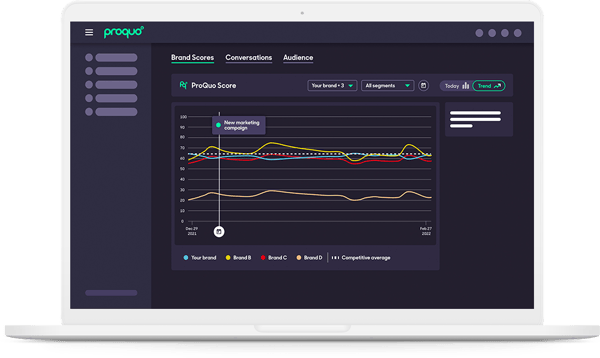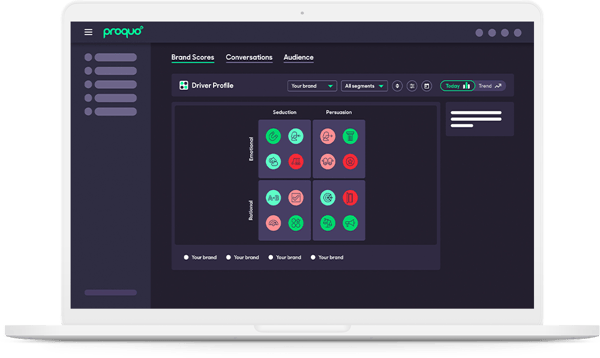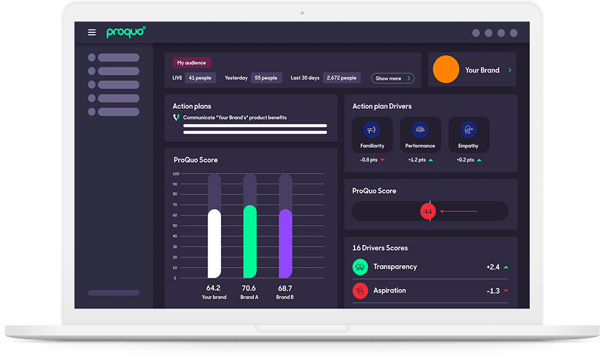Posted on February 15, 2023
Updated on March 21, 2023
5 min read time
All brands need to stay on top of the dynamics in their category. But if you’re honest with yourself, how much of your week is actually spent on competitor tracking?
When calendars get busy and workloads hectic, it’s the first thing to drop off the list.
If you don’t want to be caught off guard by your competitors, follow our guide to competitor tracking.
We’ll explore:
The right kind of tracking can give you an edge over the market, helping you to:

There’s no limit to how many competitors you should be tracking but an average of 5-10 is preferable.
Modern Consumer Insights platforms allow you to track all of your competitors in one place. This is completely revolutionizing the competitor tracking landscape, making the process more efficient, as you don’t have to spend time collating data from numerous sources, as it’s already housed in one centralized location.
Consider separating your competitors into direct and indirect.
Direct competitors exist within your category. These are brands that offer the same service. For example, Coke and Pepsi.
Indirect competitors are found outside your category. These brands offer different products but the need they are addressing or the audience they are targeting is the same as your own. For example, ready meals now compete with takeaways, as both address the same need – wanting to treat yourself at home with a nice meal.
In addition to considering direct and indirect competitors, you’ll also need a strategy for identifying when new competitors enter your market. New brands are being launched every day, so having an airtight plan of action for how to identify these brands and what to do when you’ve found them, is key to sustaining relevancy.
Currently, the most common competitor tracking tools and methods include:
However, each of these methods has its limitations.


When selecting your next competitor tracking tool, here are some key things to look out for:
You can access all of these things – and more - on ProQuo AI.
ProQuo is a live consumer insights platform that helps you understand, in real-time, which of your marketing actions – and your competitors’ marketing actions - are working and why.
Every day, consumers’ emotional and rational feelings are tracked through a single framework – providing one integrated solution for tracking, testing and business reporting needs.
ProQuo is home to the world’s largest database of subconscious consumer feelings, making it the most intelligent marketing technology for measuring the true purchase intent of your brand.
Instead of relying on ad-hoc competitor analyses, which can be slow to receive, time-consuming to complete, and siloed from your brand activities, why not embed competitor tracking into your business?
On ProQuo, you can access brand, competitor and category data, every day. Having a daily read on your competitors will enable you to spot changes as they happen, identify when momentum is building or slowing, and understand the impact of every move your competitors make.
Simply track their equity scores after an activation has gone live and you’ll know whether it’s worth considering a similar activity for your own brand.

The platform hosts all of this data on one clear dashboard, which makes it easy to compare your own performance to your competitors’. You can create charts and export data from the platform too, which helps with reporting.
All of the data runs through one consistent and proven framework – the 16 Drivers of Relationships. This framework is the only method that measures people’s feelings and thoughts in real-time. It’s integrated into everything you do on the platform – from tracking to testing your competitors’ creatives, and pulling reports on yours or your competitors’ performance.

And the best part is that once you’re set up, you’re ready to go. No more briefing agencies or waiting around for your competitors to make a move. On ProQuo, you’ll always be prepared, as your competitor dashboard will keep you up to date with the latest movements.

If you don’t believe us, why not hear from some of our customers?
The INKEY LIST - Using ProQuo to understand your category
Pip & Nut – Using ProQuo to see how you measure against your competitors
Work.Life - Using ProQuo to identify white spaces
Our intelligent platform will take your brand further, faster.
Don’t believe us?
© 2020-2023 ProQuo AI International
All rights reservedWebsite by Blend